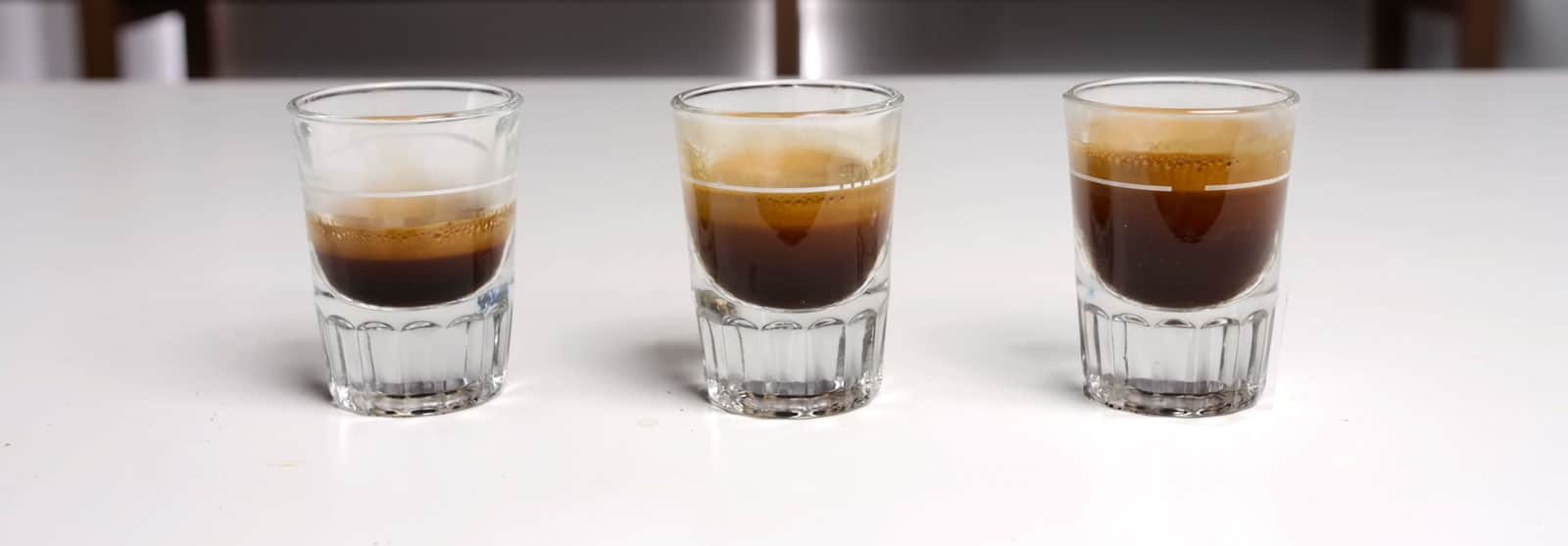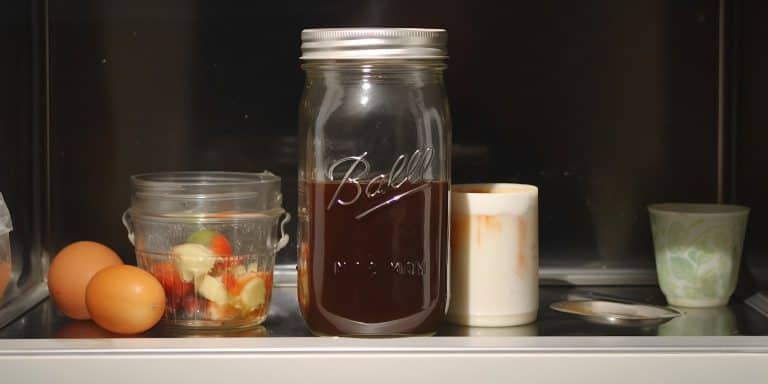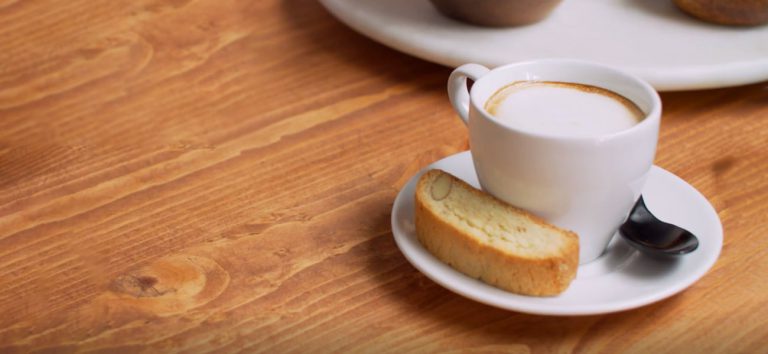Espresso Brew Ratios Explained: A Barista’s Complete Guide
When making espresso, one of the major things you have to get right is the brew ratio. Adjusting this can make all the difference between a weak and watery cup or one that’s too bitter for your taste buds.
Finding the right balance between proportions isn’t that hard once you get the hang of it, and know what you need to be mindful of.
Let me help through this article, where I dive into everything you need to know about espresso brew ratios- including the different recipes, variables, and even some tips and tricks to achieve consistently delicious espresso shots.
Let’s get started.
What’s a Brew Ratio in Espresso?
The espresso brew ratio is the proportion of coffee grounds to espresso yield. The commonly accepted specialty coffee espresso brew ratio is 1:2, which means one part coffee to two parts water. So for example, with 18 grams of coffee grinds, a 1:2 ratio would result in a target of 36 grams espresso.
It’s worth noting though that this 1:2 ratio is not set in stone, and you can use a slightly different ratio based on your preference or the type of drink being made. Some baristas go up to a 1:3 ratio.
I like my espresso at a 1:3 ratio, regardless of what all of the other coffee nerds on YouTube say 🙂
Why is the brew ratio important, you ask?
It’s because your brew ratio can greatly impact your espresso’s quality and flavor. Using less coffee or more water yields a weak and watery drink; while too much coffee or not enough water will give you a bitter or sour brew.
I recommend that you experiment a bit if you’re just starting out. Try the 1:2 ratio and the 1:3 ratio, taste your shots, and make tweaks to your cup as you see fit.
Brew Ratios for Different Espresso Recipes – Ristretto, Espresso, & Lungo
The classic espresso has always found its balance between 1:2 and 1:3, creating a smooth and full-bodied taste with a moderate amount of crema. But other recipes have also been popular to suit more tastes or moods.
These include the ristretto and lungo shots – both crafted through an espresso machine with a few changes to the espresso brewing variables, which modify the final ratio.
- The ristretto has a much shorter extraction time and therefore requires less water than a regular espresso shot. The standard ratio for a ristretto is 1:1, resulting in an intense and concentrated flavor profile with a sweeter taste, which is counterintuitive to some.
- For those who prefer a longer and milder shot, there’s the lungo. It uses more water than an espresso shot, resulting in a lighter body and softer flavors. The standard ratio for a lungo is 1:3 or even 1:4, depending on how mild you want your drink to be.

Here’s a quick overview of the three recipes:
| Recipe | Brew Ratio | Result |
|---|---|---|
| Ristretto | 1:1 | Intense and concentrated flavor profile, sweet |
| Espresso | 1:2 to 1:3 | Full-bodied taste, moderate amount of crema |
| Lungo | 1:3 to 1:4 | Lighter body and softer flavors |
To find your perfect ratio, start with a basic recipe using a scale to measure everything accurately; then adjust accordingly. Don’t be afraid to try different ratios and modify the variables either, just make sure to only change 1 variable at a time.
For me, I found the sweet spot for longer shots at a lower dose of 1:4.5, while I pull my espresso shots at a ratio of 1:3.
Another popular way to customize your espresso is by introducing milk to the equation. The ratio though, isn’t about coffee and water, but instead focuses on the final espresso shot and the milk. A lot of people mix this up. So for example, when you hear that the latte‘s ratio is 1:3, it actually means one part espresso is infused with 3 parts milk. Meanwhile, the cappuccino has a ratio of 1:1:1 relating to equal parts espresso, milk, and milk foam.
You may also have heard the term “1:16.66 Golden Ratio”, which is used for pour-over and drip coffee, never for espresso 🙂
Brewing Variables for Dialing in Your Espresso
There are multiple variables you have to take into consideration to really customize and perfect your espresso. This is called dialing in, which is a more complex topic that I dedicated an entire article to. Here are the basics:
Dose
Dose refers to the amount of ground coffee used for each shot. A standard single shot generally ranges from 8-10 grams of coffee, while a double (or doppio) uses 16-20 grams of coffee. However, adjusting the amount of coffee will also affect the other brewing variables such as yield and time, so it’s important to keep them all in mind.
You should also know that specialty coffee doesn’t brew single shots, since the formation of the single portafilter baskets don’t allow for proper extraction. Specialty coffee always uses the double portafilter basket.
Yield
The amount of liquid extracted from your chosen dose dictates the yield. Let’s say you’re using 16 grams of coffee, so your yield at a 1:2 ratio would be around 32 grams (about one ounce) of liquid. It is easy to calculate based on the ratio number.
If you’re going for a 1:1 ristretto shot, which requires less water, you can expect a yield of around 16 g while a lungo at 1:4 will produce a 64 g yield.
Extraction time
The amount of time that the hot water comes into contact with the coffee grounds or the extraction time, is also crucial for your brew. The ideal range is usually between 25 to 35 seconds but varies based on various factors like grind size, bean type, or just your personal preference.
Here’s how you can adjust your extraction time:
- Under-extraction: a sign of extraction time being too short (less than 20 seconds) so you want to make your grind size finer.
- Over-extraction: caused by long extraction time which can be fixed by using a coarser grind of coffee.
- Adjusting acidity and sweetness: you can also affect the acidity and sweetness of your coffee through extraction time. Improve acidity with a quick pull and slow down for an increased sweetness.
Now let’s talk about how to adapt to your choice of roasted coffee beans. Here’s how you want to adjust your variables accordingly:
| Espresso Roast | Extraction Time |
|---|---|
| Light Roast | Longer (around 30-35 seconds) |
| Medium Roast | Similar to light roast (around 30 seconds) |
| Dark Roast | Shorter (around 25-30 seconds) |
Remember to always use a reliable scale such as the Timemore Black Mirror Basic Plus, as this tool is crucial for consistency. Even minor differences in dose or yield can significantly affect your espresso taste.
Single Shot vs Doppio: Portafilter Basket Sizes and Their Role in Brew Ratios
Another factor to keep in mind when playing around with brew ratios is your portafilter basket size. It’s that little metal cup with tiny holes in the bottom where you put your ground coffee before tamping and attaching it to your espresso machine.
While its diameter on standard espresso machines is 58mm, it varies by manufacturer. Breville espresso machines use a 54mm portafilter, while Delonghi uses a 51mm one.
Portafilter baskets come in different sizes:
- Single basket: 7 to 12 grams of ground coffee
- Double basket: 14 to 21 grams
- Triple basket: At least 24 grams

The general rule of thumb is to match your desired shot volume with the appropriate basket size. If you prefer a smaller dose of coffee and less liquid overall, go for the single basket. If you’d rather have a more concentrated and stronger flavor profile, choose the larger double basket to pull a doppio or double shot.
While more uncommon, you can also go for the triple basket if you want to pack more coffee grounds in one go. I’ve never actually used one though.
Just note that when selecting a specific portafilter basket size for your espresso machine, make sure to check if it’s compatible first. As I mentioned, some machines only work with certain size baskets, so do your research beforehand.
Barista Tips and Tricks for Consistent Espresso Coffee
To further help you ace your espresso game, here are a few tips to help you maintain your pulls of great-tasting espresso shots:
- Keep your equipment clean: Make sure to regularly clean your grinder, portafilter baskets, and group heads. A dirty machine will affect the taste and quality of your espresso.
- Use fresh beans: The fresher the coffee beans you’re using, the better your espresso will be. Try to use beans within two weeks of roasting for optimal flavor.
- Calibrate your grinder: Your grinder settings play a huge role in determining the correct brew ratio for your shot. Make small adjustments to your grind setting until you find the sweet spot where extraction time, yield, and flavor all balance out.
- Measure everything on a scale: Don’t eyeball anything. Measuring both the dose and yield with an accurate digital scale ensures precision while enabling reliable experimentation.
- Timing is key: Set a timer when pulling shots so that carefully monitoring every shot becomes effortless, giving you excellent results.
- Take notes: Record observations such as recipe changes and weight measurements along with evaluation results based on taste profiles – this way if you stumble across something extraordinary while experimenting- there’s no chance of forgetting what worked.
Troubleshooting Common Espresso Issues
As much as we strive for perfection, sometimes shots just don’t come out the way we want them to. But fear not, you can easily troubleshoot common espresso issues with the right knowledge.
Addressing inconsistent shots
Getting inconsistent shots means you are doing something different each time you pull a shot. If this happens, and all other measurable factors are unchanged, it usually means your distribution wasn’t even or maybe there was channeling in the puck. To address this issue, level your coffee more carefully next time, and ensure that you’re tamping evenly with the same amount of pressure.
Bitter or sour espresso

When playing around with the various ratios mentioned earlier on, it’s possible to over-extract the coffee if too little water has been used (causing bitterness), while sourness is usually caused by under-extraction – where too much water flows through the grounds without extracting all of its flavors and oils.
Modifying your grind size and arriving at around a 30 second extraction time will fix this.
Extraction time is too fast or too slow
If your extraction time is too fast or slow, you may need to adjust your grind size so that it matches how long it takes for water to flow through at a steady pace. Use a finer grind size if it’s too fast and coarser if it’s too slow.
Troubleshooting temperature
Outside of the brew ratio, you might also want to adjust the brewing temperature of your espresso machine if you can. I recommend you keep the temperature between 90 and 96°C (195/205°F). Going too hot can result in higher extraction yields or burnt coffee while colder temperatures will extract your coffee slower.
However, lighter roasts warrant a slightly higher temperature, while dark roasts are better with slightly colder brewing water.
Conclusion
Wrapping things up, it really takes time and practice to master the perfect espresso brew ratios. Start with the standard espresso ratio of 1:2, then adjust accordingly based on your preference or the type of drink you want to make.
Don’t be afraid to experiment with different variables, such as dose, yield, extraction time, and even basket size.
With these in mind, you’ll soon be able to pull consistently delicious espresso shots that hit all the right flavor notes.







